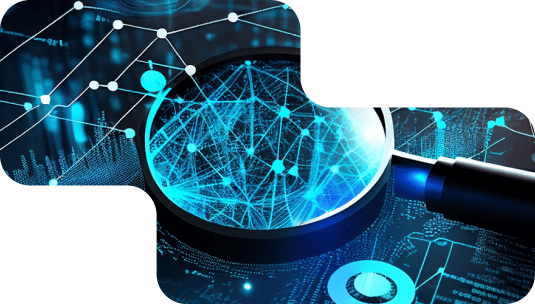Effective vulnerability management identifies, assesses, and mitigates risks across an organization’s IT environment, ensuring a proactive approach to cybersecurity. This service helps protect critical assets while maintaining compliance with security standards.

Identifies and categorizes assets across the organization to determine the scope of vulnerability assessments.
Analyzes vulnerabilities based on their criticality, business impact, and exploitability to prioritize remediation efforts.
Develops and implements strategies to address vulnerabilities, followed by validation to ensure successful mitigation.
Implements ongoing scanning and monitoring, with detailed reporting to track progress and maintain a strong security posture.

Cybersecurity Maturity Assessment

Assess the cyber security posture

Assess the cyber security posture

Assess the cyber security posture

Assess the cyber security posture

Assess the cyber security posture

Assess the cyber security posture

Assess the cyber security posture

Assess the cyber security posture

Assess the cyber security posture

Assess the cyber security posture

Assess the cyber security posture

Assess the cyber security posture of your organization

Assess the cyber security posture of your organization

Assess the cyber security posture of your organization

Assess the cyber security posture of your organization

Assess the cyber security posture of your organization

Assess the cyber security posture of your organization

Assess the cyber security posture of your organization

Assess the cyber security posture of your organization

Assess the cyber security posture of your organization

Assess the cyber security posture of your organization

Assess the cyber security posture of your organization

Assess the cyber security posture of your organization

Assess the cyber security posture of your organization

Information security, cybersecurity and privacy protection — Information security management systems

Security techniques — Extension to ISO/IEC 27001 and ISO/IEC 27002 for privacy information management

Security and resilience — Business continuity management systems

Information technology — Security techniques — Code of practice for information security controls based on ISO/IEC 27002 for cloud services

Information technology — Security techniques — Code of practice for protection of personally identifiable information (PII) in public clouds acting as PII processors

Information technology — Service management Part 1: Service management system requirements

Information technology — Artificial intelligence — Management system

Assess the cyber security posture of your organization

Assess the cyber security posture of your organization

Assess the cyber security posture of your organization

Assess the cyber security posture of your organization

Design and implement a data governance framework aligned with business goals and regulatory requirements

Define and assign data stewardship roles for your organization.

Ensure the accuracy, consistency, and completeness of data

Establish consistent, accurate, and controlled master data

Organize data for easy access and use

Ensure compliance with governance policies and regulations

Manage data from creation to disposal

Ensuring organizational alignment and readiness for governance practices

Evaluate data privacy practices against legal and regulatory frameworks

Draft and implement privacy policies that comply with regulations

Map out and document data flows across the organization

Manage requests related to data subject rights

Embed privacy considerations into data management processes

Ensure that thirdparty vendors adhere to data privacy standards

Manage data breaches and minimize the risk of future incidents

Ensure continuous compliance with privacy regulations

Raise awareness and ensure employees understand data privacy responsibilities

Assess the cyber security posture

Assess the cyber security posture

Assess the cyber security posture

Assess the cyber security posture of your organization
